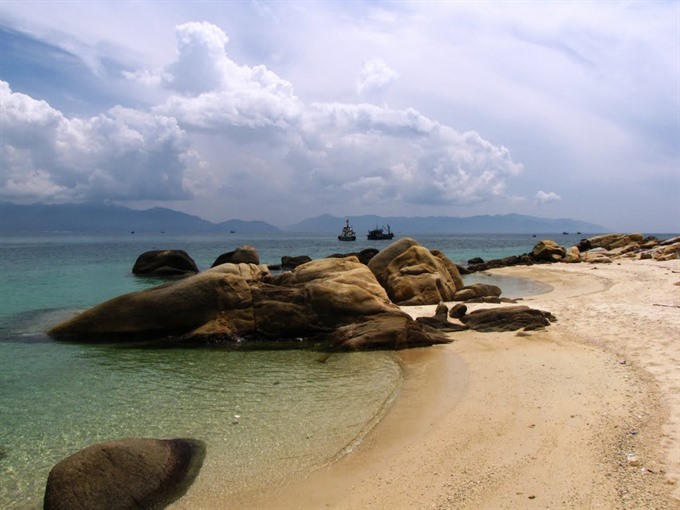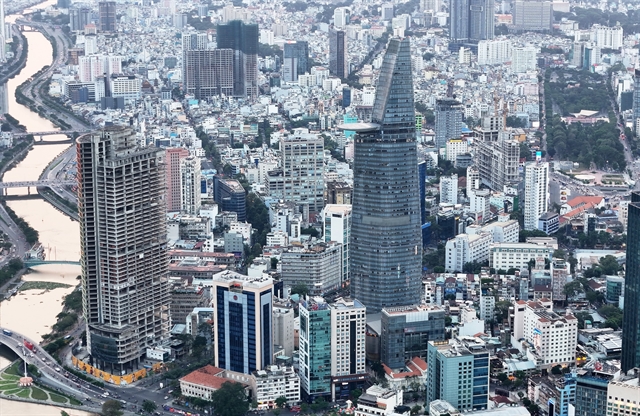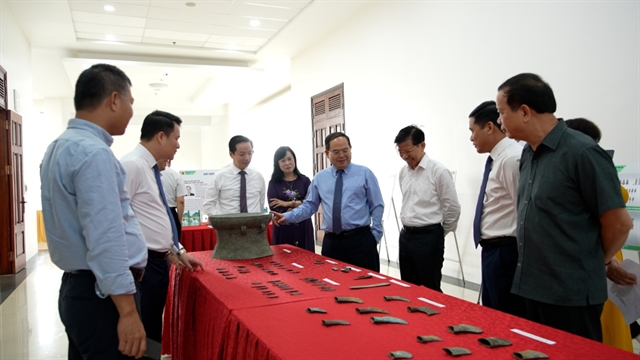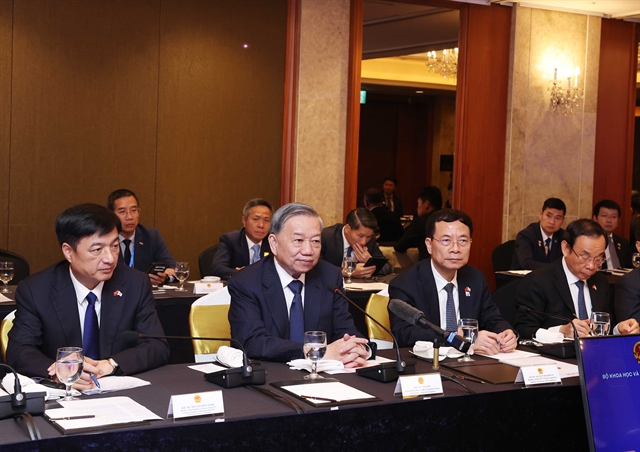 Environment
Environment

The Bình Thuận administration has sought to allay concerns over the proposed dumping of 1.5 cubic metres of “materials” into the ocean, saying these are “natural sea sediment,” not industrial waste.
 |
| Many people are concerned that the Hòn Cau Marine Protected Area (MPA) will be harmed if a thermal power plant project is granted permission to excavate the seabed and dump the dredged contents in the ocean. — VNS Photo |
BÌNH THUẬN – The Bình Thuận administration has sought to allay concerns over the proposed dumping of 1.5 cubic metres of “materials” into the ocean, saying these are “natural sea sediment”, not industrial waste.
However, officials have also acknowledged that the concerns are valid and the Ministry of Natural Resources and Environment (MoNRE) could re-assess the relevant project’s environmental impacts.
The sea sediment claim is contained in a report presented at a news conference by Nguyễn Ngọc Hai, Chairman of the Bình Thuận People’s Committee.
It says the 1.5 million cubic metres of materials that the Vĩnh Tân 1 Electric Power Co Ltd wants to dump into the ocean is natural sea sediment, not industrial waste.
The press conference was held after many people expressed worries that the dumping could cause pollution in the sea area.
The sediment will be dredged by a US$1.8 billion thermal power plant in the province’s Vĩnh Tân Commune, Tuy Phong District.
The project has been approved by the General Department of Energy under Ministry of Industry and Trade (MoIT).
One component of the project is a specialised pier that can accommodate cargo ships of 30,000-50,000 DWT (deadweight tonnages). The seabed will have to be excavated for the water around the pier to have a depth of 12.7m.
The environmental impact assessment of this project component – verified by MoNRE in 2014 – states that the initial amount of excavated sediment would be 1.5 million cubic metres, with another 269,000 cubic metres to be dug up annually for maintenance.
According to this assessment, the sediment will be comprised mostly of sand, seashells, gravel, clay and mud.
The amount of heavy metal contained in the sediment will be “lower than permitted levels as per National Standards”, and will not contain any polychlorinated biphenyls (PCB) or dioxin pollutants.
The proposal is to dump the sediment in an offshore site 10km from the project’s location.
The assessment claims that the pier’s traffic and other activities will not affect the Hòn Cau Marine Protected Area (MPA) which is just 8km from the dump site.
Justified fears
However, this assessment has not been accepted by experts and the public who fear that the dredging and dumping will certainly impact the marine ecosystem, compromise the MPA’s integrity, affect marine resources and local aquaculture production.
Phạm Văn Nam, Deputy Chairman of the Bình Thuận People’s Committee, accepted a news conference on Thursday that such concerns were justified.
He said the provincial administration has asked MoNRE to re-evaluate the environmental impacts of dredging, with emphasis on composition and volume of the sediment, the dump site, and whether local agriculture will be affected.
If the construction negatively impacts the marine environment, the environment ministry will need to devise a new plan that ensures sustainable development of the region during the construction and operation of the power plant, he said.
Nam also said scientists and experts have been invited to review MoNRE’s assessment.
Not arbitrary
On the decision to reduce the original area of 12,500ha of the Hòn Cau MPA to 11,440ha, Nam said that the establishment of the MPA zone as well as the planning of the Vĩnh Tân thermal power complex and the Vĩnh Tân General Port were decided by the MoIT and approved by the Prime Minister.
Nam said 1,060ha of the soon-to-be-built complex overlaps the designated MPA zone, so a decision was taken to grant that area of land to the company to complete the complex.
The provincial administration had not taken this decision arbitrarily, said.
While reiterating the authorities’ viewpoint, Nam also said that “the environment will not be sacrificed for the sake of economic development (in ways) that will hurt local people’s livelihoods and the protected zone.”
“Environmental protection is a requirement throughout economic development,” he said. — VNS




